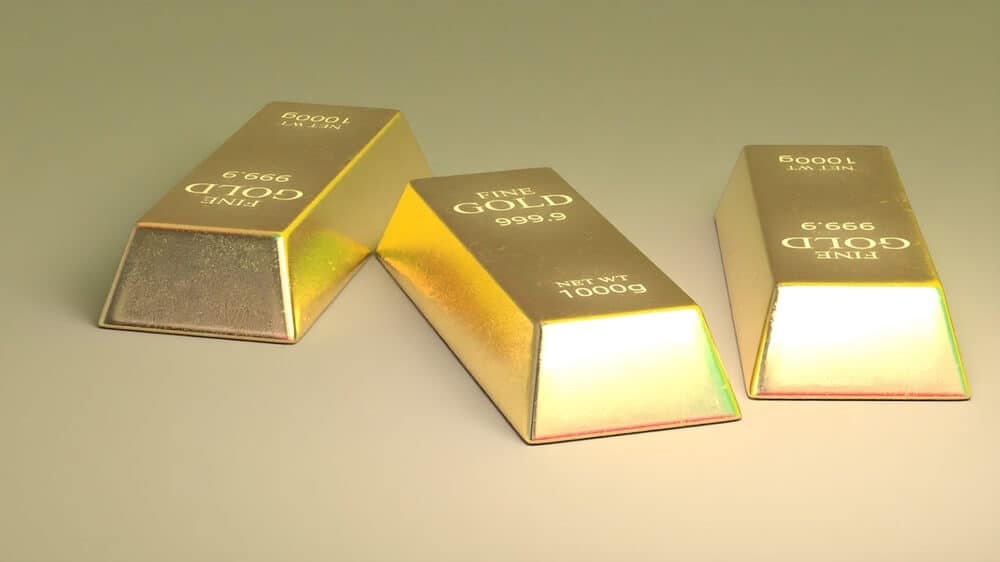- Our content is independently written and reviewed by trusted reviewers & fact-checkers.
- Your information is never sold. We can earn money by connecting you with top Gold IRA Companies. Learn how our reviews work.
- Want to learn more? Meet our authors and explore our editorial policy.

It is definitely worth making some savings during your retirement, and opening an IRA is one of the best ways to do so. It can help you compound the income from dividends, interest, and capital gains every year without taxes reducing it.
What’s more, it can also help you avoid taxes on either the funds you transfer into the plan at the beginning or the ones you withdraw during your retirement, depending on the kind of IRA you pick.
However, how much money do you need to start an IRA? What are the requirements and limitations you should know before you begin the process? Keep on reading to learn more about the minimum to open an IRA and other aspects of such an investment account!
Table of Contents
Short Summary
- IRA is an individual retirement account, and it offers many tax advantages when you retire.
- The minimum to open an IRA depends on its particular type, including traditional, Roth, SEP, SIMPLE, and self-directed IRAs.
- IRAs may be free to establish, but you will have to cover such costs as annual account fees, broker transaction costs, etc.
- If you withdraw the funds too early, you will have to cover certain penalties.
What Is an IRA?
IRA stands for an individual retirement account, and it can be used by people with earned income as an account for long-term savings for the future. It can be better than just a regular account because of its tax advantages.
The IRA has been created mostly for self-employed individuals who cannot benefit from workplace retirement accounts such as the 401(k) that can only be accessed through employers. However, now it is used by individuals of various incomes.
How Much Do You Need to Open an IRA of a Certain Type?
The minimum amount to open an IRA typically depends on the particular type of savings account you choose. The most common types of IRAs are as follows:
Traditional IRA
With this pre-tax account, your contributions can be tax-deductible in the year you make them. The money within increases tax-deferred up to the moment retirement starts – at this point, withdrawals start to be taxed as income.
Usually, the expenses you need to cover in the case of a traditional IRA may include a set-up fee, a broker transaction fee, and an annual account fee. The good news is that most of them are free to open, apart from the upfront investment.
After the age of 59½, you can withdraw the traditional IRA contributions penalty-free (in some cases also earlier, if you meet special requirements). However, you need to start RMD (required minimum distribution) withdrawals at the age of 73.
This solution is the most recommended if you think you will land in a lower tax bracket when you retire.

Roth IRA
Contrary to a traditional IRA, in this post-account, you can only make contributions with after-tax dollars. It offers tax-free growth and tax-free withdrawals in retirement, so the costs associated with it are similar to those in a traditional IRA and also include the potential set-up fees, annual account fees, and broker transaction costs.
Normally, you can’t withdraw Roth contributions for five years. When it comes to the initial contribution, you can withdraw it at any time without a particular reason, with no penalties or taxes. What’s more, when you are older than 59½ years, all the withdrawals are also tax and penalty-free.
Interestingly, contrary to Traditional IRAs, Roth IRAs are not dependent on RMD withdrawals.
SEP IRA
SEP stands for a simplified employee pension. Such an account is mostly recommended to small businesses and self-employed individuals.
In this case, you will encounter the same cost structure as in a traditional IRA, but as it is an employer-sponsored account, it may include some additional administrative costs.
An employer can contribute to the lesser of up to 25% of the employee’s salary or $66,000 once a year. When the contributions are transferred, the SEP IRA specifics are basically identical to those associated with a traditional IRA.

SIMPLE IRA
The SIMPLE here is an acronym for Savings Incentive Match Plan for Employees. In this case, both an employer and employee can make contributions, just like in a 401(k) plan, but with less expensive administration and reduced contribution limits.
The costs of a SIMPLE IRA are similar to those associated with a traditional IRA, including set-up costs, annual account fees, and broker transaction costs. However, if you are a company sponsoring the account, you may also have to cover additional administrative costs.
This solution is available for businesses hiring 100 or fewer employees. When a SIMPLE IRA is established, an employer needs to contribute 2-3% for matching contributions each year, while the employees can choose if they want to contribute or not.
To be eligible for such an account, an employee must have earned $5,000 in the last two years and expect to earn $500 this year.
As for 2024, the annual contribution limit for a SIMPLE IRA is $16,000. If you are an employee aged 50 or more, you are allowed to make extra catch-up contributions of $3,500, for a total of $19,500.
Self-Directed IRA (SDIRA)
A self-directed IRA is an untypical kind of IRA that allows you to hold many alternative investments typically prohibited from regular IRAs. Normally, your options are limited to common securities like bonds, stocks, mutual or exchange-traded funds (EFTs), or certificates of deposit (CDs).
In the case of SDIRA, you can hold such investments as real estate, commodities, private placements, limited partnerships, or precious metals. A trustee or a custodian administers the account, but it is directly managed by the account holder, hence the name self-directed IRA.
You can establish an SDIRA either as a form of a Roth IRA (from which you get tax-free distributions) or a traditional IRA (where you make tax-deductible contributions).
Such a solution is best suited for experienced investors who already have some knowledge and want to diversify in a tax-advantaged account. Some of the most popular SDIRA investments nowadays include a gold IRA and a silver IRA.

Contributions to a self-directed IRA are limited to annual amounts. In 2024, this amount is $7,000, with a $1,000 catch-up contribution for individuals older than 50. When you start withdrawing, you will pay regular income taxes depending on your income level, provided that you are younger than 59½. What’s more, any withdrawals before this age are associated with a 10% penalty and an income tax on the withdrawal.
When you are 73 years old, the IRS requires you to start withdrawing. There are certain minimum requirements to be met, depending on your life expectancy and account balance.
How Much to Open an IRA and Maintain It?
In most cases, IRAs will be free to establish, but the costs can differ depending on the account type and the broker or provider you choose.
Typically, you will have to cover a setup fee and variable broker transaction fees, but you always need to check with your provider to be sure how much you will be charged for the service.
Importantly, in the case of Roth IRAs, a contributor needs to take into consideration the impact of taxes on their initial investment. It also happens that SIMPLE and SEP IRAs include some extra administrative costs that you will have to pay upfront and on a regular basis (especially if you are employer-sponsored).
IRA Maintenance Costs
As you keep on maintaining your IRA, be prepared to cover annual fees for your account to stay open. They can be, for example, account maintenance fees and trading securities fees.
Moreover, remember that withdrawing early from your IRA or performing other actions may lead to penalties that will make the maintenance more expensive. Apart from that, if you trade often within your IRA, you may also be faced with higher transaction costs.
On top of that, you should keep in mind there are more costs based on the type of investments you make, usually passed on to you from your broker.

How Much to Start an IRA? – The Final Note
Having the right knowledge of the minimum amount to open an IRA and other important aspects of this account is a very significant part of your retirement planning. You should be aware of both the upfront costs and the regular costs, including those associated with various types of IRAs, investments, and possible penalties.
Here at Gold IRA Blueprint, we provide all the necessary information needed to invest in gold or other precious metals. If you are interested in that option, browse through our website or contact our expert team!
Article Sources
At Gold IRA Blueprint, we dive deep into the world of gold IRAs, using trusted sources to back up our insights. Our sources range from official documents to expert interviews, ensuring our content is both accurate and reliable. We also draw on research from reputable publishers to give you the most comprehensive understanding possible. Check out our editorial policy to see how we maintain our high standards for accuracy and fairness. Also make sure to check out our Financial Review Process to have a better understanding of our process.













